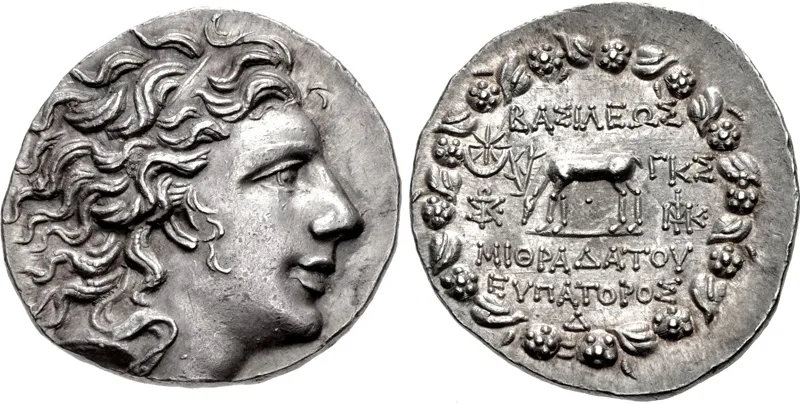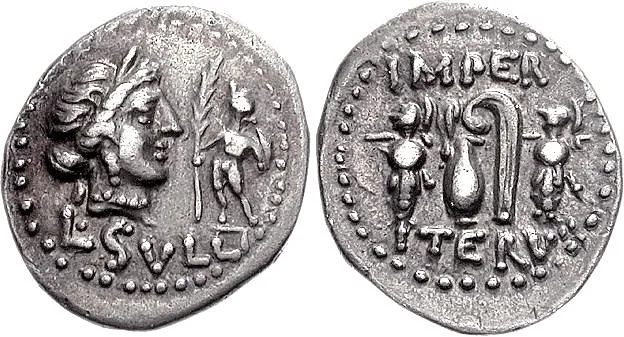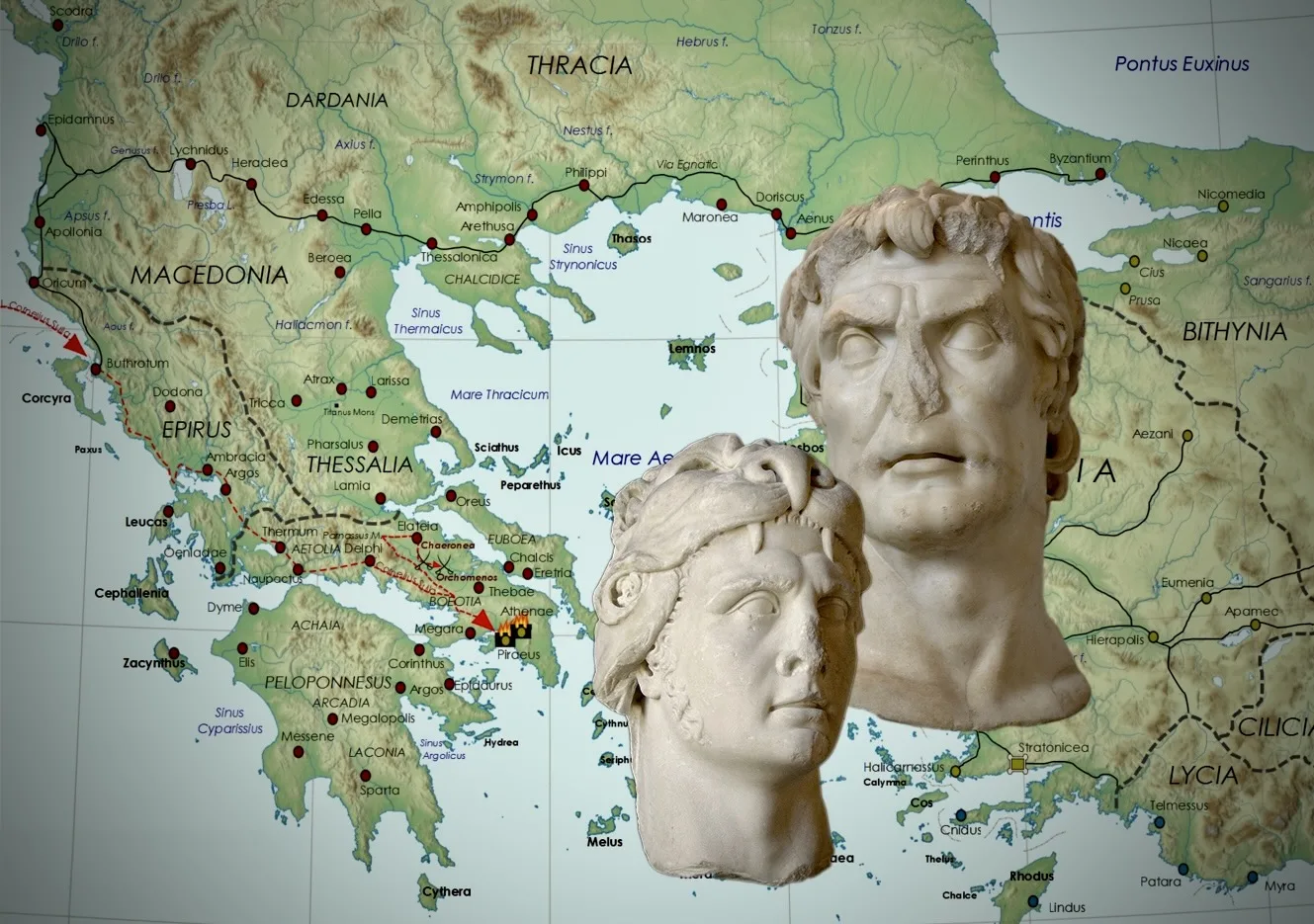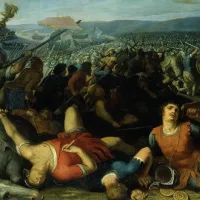In the annals of ancient history, few conflicts resonate as profoundly as the Mithridatic Wars against Pontus. Can you imagine a struggle lasting nearly forty years, pitting mighty Rome against resilient Pontus?
These wars were not just battles; they were a clash of civilizations, ideologies, and ambitions. Why did Rome feel so threatened? How did these wars shape the Eastern Mediterranean? Discover the dramatic stories and strategies that paved the way for Rome’s dominance. Keep reading to uncover the intentions and emotions behind!
Roman Perspective Containing a Threat in Asia Minor
The Mithridatic wars from the Roman perspective, Asia Minor was a region of immense strategic and economic importance. The rise of Mithridates VI and his ambitions posed a direct challenge to Roman interests. The Kingdom of Pontus, with its vast resources and strategic location, was a potential powerhouse that could disrupt the balance of power.
Firstly, Rome had a well-established system of alliances in the region, which they could leverage against Pontus. Their military might, combined with their vast resources, made them a formidable opponent. Moreover, the Roman Senate saw the containment of Mithridates as essential for the stability of the region and the protection of their eastern provinces.
However, the challenges were equally daunting. Mithridates was not just a king; he was a symbol of resistance against Roman expansion. His ability to forge alliances and rally support meant that Rome was not just fighting a state but an idea. Furthermore, the vast distances and diverse terrains of Asia Minor presented logistical challenges for the Roman legions.
Pontic Perspective Resisting Roman Imperialism in the East
For the Kingdom of Pontus and Mithridates VI, the wars were a desperate bid to resist the encroaching shadow of Roman imperialism. Mithridates, often hailed as the “Poison King” for his immunity to toxins, was a beacon of hope for many in the East who felt the weight of Roman boots.
The Mithridatic wars from the Pontic perspective, resisting Rome was not just about preserving sovereignty but also about protecting Eastern traditions and cultures from Roman assimilation. The advantage here lay in the deep-rooted sense of identity and purpose. Mithridates, with his blend of Greek and Persian heritage, epitomized this fusion of cultures and presented a formidable front against Roman advances.
Yet, the challenges were immense. The Roman war machine was relentless, and their network of alliances often isolated Pontus. Moreover, internal dissent and the vastness of the Pontic territory made it challenging to present a united front against the Roman onslaught.

In Conclusion
The Mithridatic Wars against Pontus were more than just battles; they were a manifestation of the age-old struggle between the East and West. From the Roman perspective, it was about containing a potent threat in Asia Minor. For Pontus, it was a fight against the tidal wave of Roman imperialism. Both sides had their strengths and faced immense challenges.
The Mithridatic Wars’ Alternate Outcomes
The Mithridatic Wars, pivotal in shaping the trajectory of the Eastern Mediterranean, have long been a subject of historical fascination. But what if the outcome had been different? What if these wars had never occurred, or if Pontus had emerged as the victor? Such alternate scenarios provide a tantalizing glimpse into a world that might have been.
1. If the Wars Had Not Happened:
Without the wars, the trade routes and cultural exchanges in the Eastern Mediterranean might have remained more diverse. The Hellenistic influence could have been more pronounced, with less Roman assimilation.
The power dynamics in Asia Minor would likely have been more fragmented. Without the wars to consolidate its power, Rome might have faced challenges from other regional powers, leading to a different set of alliances and conflicts.
2. If Pontus Had Won:
A victorious Pontus would have solidified its position as a major power in Asia Minor. This could have led to a more Eastern-oriented power balance, with Pontus possibly forming alliances with other Eastern kingdoms against Rome.
With Pontus’s blend of Greek and Persian cultures, the East might have seen a resurgence of Persian influence. The cultural landscape of Asia Minor could have been a richer tapestry of Hellenistic and Persian traditions.
Pontus could have controlled key trade routes, leading to a shift in economic power. This might have impacted Roman trade and prosperity.
Which perspective do you find more compelling in the Mithridatic Wars, the Romans or the Pontic, and why? Let us know and Comment below!
Mithridates VI and the Mithridatic Wars
In the heart of Asia Minor, a king rose to challenge the might of Rome. Mithridates VI of Pontus, often dubbed the “Poison King,” was not just a monarch; he was a symbol of resistance. His story, intertwined with the Mithridatic Wars, is one of ambition, resilience, and a relentless quest to preserve the East from Roman dominance.
Mithridates, from a young age, was no stranger to intrigue and danger. Legend has it that he was so paranoid about assassination attempts that he consumed small doses of various poisons throughout his life to build immunity. This practice earned him the moniker “Poison King.”

But his resistance to Rome was not born out of mere ambition. It was a response to the growing Roman encroachment in Asia Minor. As Rome’s influence expanded, Mithridates saw the cultural and political fabric of the East under threat. He envisioned a united front, rallying neighboring kingdoms and states against the Roman juggernaut.
One of the most poignant episodes from the Pontic perspective was the “Asian Vespers.” In 88 BCE, Mithridates orchestrated a mass slaughter of Roman and Italian settlers across Asia Minor. In a single day, an estimated 80,000 were killed. This audacious act was not just a military strategy but a statement – the East would not bow down without a fight.
However, Mithridates’ resistance was not without its challenges. Facing the formidable Roman legions, he had to employ guerilla tactics, forge alliances, and often retreat to strategize anew. His resilience was evident in the fact that Rome had to wage three separate wars against him, spanning nearly four decades.
In the end, while Pontus could not halt the Roman advance entirely, Mithridates’ defiance ensured that Rome had to pay a heavy price for its eastern conquests. His legacy, though overshadowed by Roman narratives, remains a testament to the indomitable spirit of those who resisted the tide of imperialism.
Lucius Cornelius Sulla and the First Mithridatic War
Lucius Cornelius Sulla, a seasoned military commander with a reputation for both brilliance and ruthlessness. Tasked with quelling the Pontic threat, Sulla embarked on a campaign that would test the mettle of Roman legions.
In 84 BCE, Sulla laid siege to Athens, which had sided with Mithridates. Despite facing challenges like famine and strong fortifications, Sulla’s persistence paid off. Athens fell, showcasing Roman military prowess.

However, the true testament to Rome’s strategic genius was the Battle of Chaeronea in 86 BCE. Sulla, despite being outnumbered, employed a combination of tactical maneuvers and feigned retreats. This strategy drew the Pontic forces into a trap, leading to a decisive Roman victory.
The First Mithridatic War concluded with the Treaty of Dardanos in 85 BCE. While Mithridates remained a force to be reckoned with, this treaty marked a significant Roman victory, setting the stage for subsequent confrontations.
Want more of → Perspectives ←
FAQ
1. Why were the Mithridatic Wars significant for the Roman Republic?
The Mithridatic Wars were significant for Rome because they posed a direct challenge to Roman interests in Asia Minor. Mithridates VI’s ambitions threatened Roman control over the region, making it imperative for Rome to contain this threat to maintain stability and protect their eastern provinces.
2. What advantages did Rome have in the conflict with Pontus?
Rome had several advantages, including a well-established system of alliances in the region, formidable military strength, and vast resources. These factors allowed Rome to leverage its power against Pontus and maintain control over the Eastern Mediterranean.
3. Why did Mithridates VI resist Roman expansion in the East?
Mithridates VI resisted Roman expansion to preserve Pontic sovereignty and protect Eastern traditions and cultures from Roman assimilation. He was seen as a symbol of resistance against Roman imperialism, inspiring hope among many in the East.
4. What challenges did Pontus face in its conflict with Rome?
Pontus faced challenges such as the relentless Roman war machine, isolation due to Roman alliances, internal dissent, and the vastness of Pontic territory. These factors made it difficult for Pontus to present a unified front against Roman advances.
This was a delight to read. You show an impressive grasp on this subject! I specialize about Appliances and you…
i think he was just a crazy guy, a victim of his childhood and enviroment
super interesting 🤔
Loved this article, learned a lot!




Leave a Reply